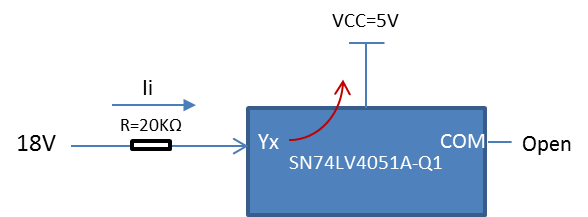Hi
I'm wondering if the device would be damaged or not under the following case.
Our assume is following.
The 18V voltage is applied to Yx as the input via series 20Kohm register, and VCC is 5V.
( INPUT (18V) -> [20Kohm resistor] -> Yx pin )
The IO diode current conducted to VDD and GND would be limited by ~900uA (18V/20Kohm) with series resister.
In this case, would the device be damaged?
What is your view?
BestRegards



